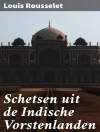In ‚Journals of Travels in Assam, Burma, Bhootan, Afghanistan and the Neighbouring Countries, ‚ William Griffith offers a comprehensive account of his extensive travels throughout Southeast Asia and the Himalayas in the 19th century. His work is characterized by meticulous observations and vivid descriptions, combining elements of adventure with a scholarly approach to geography, ethnography, and natural history. The literary style is a reflection of the era’s fascination with exploration, marked by detailed narrative accounts that convey the challenges and experiences encountered in regions that were largely uncharted at the time. Griffith’s narrative not only documents his physical journey but also serves as a cultural dialogue between the diverse peoples and landscapes he encountered, making it a significant contribution to travel literature and the understanding of these regions during a period of imperial curiosity. William Griffith, a naturalist and diplomat, harnessed his experiences as a member of the British East India Company to bring an authentic voice to his writings. His interactions with local tribes and landscapes were informed by his British-Indian background and his role in the colonial administration, allowing him to capture both the diplomatic sensitivities and the rich cultural textures of the places he visited. Griffith’s work embodies the scientific spirit of the Victorian era while engaging with the political and social complexities of colonialism, making his insights all the more valuable. This remarkable collection is highly recommended for scholars, historians, and anyone captivated by travel narratives or interested in colonial histories. Griffith’s journey presents a unique lens through which to appreciate the intricate tapestries of Assam, Burma, Bhootan, and Afghanistan, making it an essential addition to the libraries of those who seek to understand the intertwining of culture, nature, and history in these fascinating regions.
Über den Autor
William Griffith was a significant figure in the realm of botanical exploration during the nineteenth century. His most renowned work, ‚Journals of Travels in Assam, Burma, Bhootan, Afghanistan and the Neighbouring Countries, ‚ offers a meticulous account of his observations and findings during his expeditions in these remote regions. A man of science and curiosity, Griffith served as a botanist attached to the British East India Company, a role through which he contributed substantially to the understanding of the flora of the Indian subcontinent and its environs. His literary style, characteristic of the scholarly ethos of his time, bridged the gap between detailed scientific reporting and the evocative descriptions of the landscapes he traversed. In his writings, Griffith did not merely catalog the numerous plant species he encountered but also documented the socio-cultural milieu of the regions he visited, making his work invaluable not only to botany but also to ethnography and geography. Unfortunately, William Griffith’s life was cut short at the young age of 34, yet his legacy endures through his enduring scientific observations and the rich narrative of his travels.












